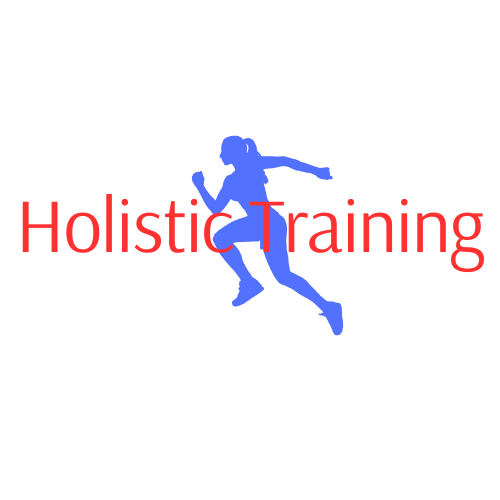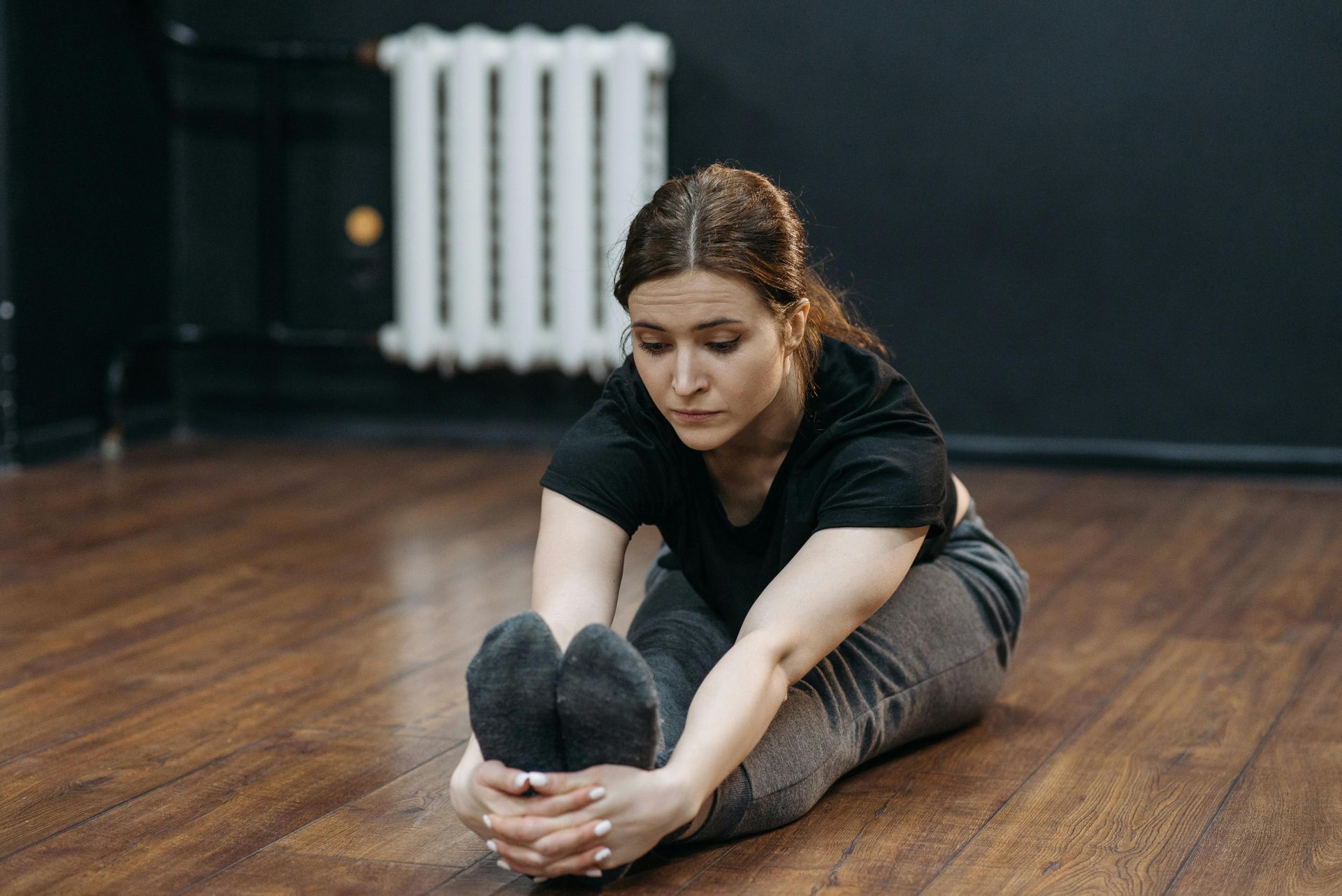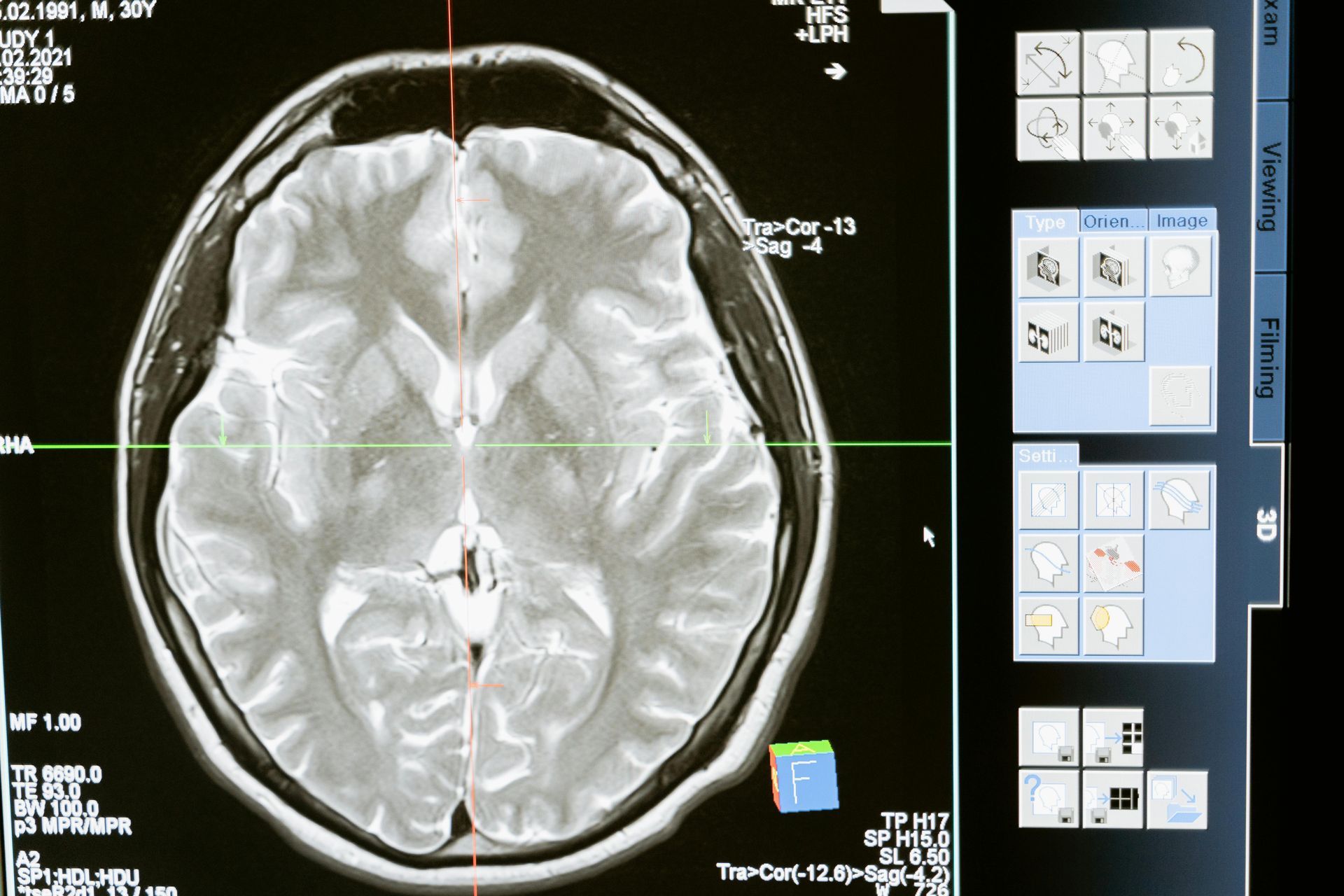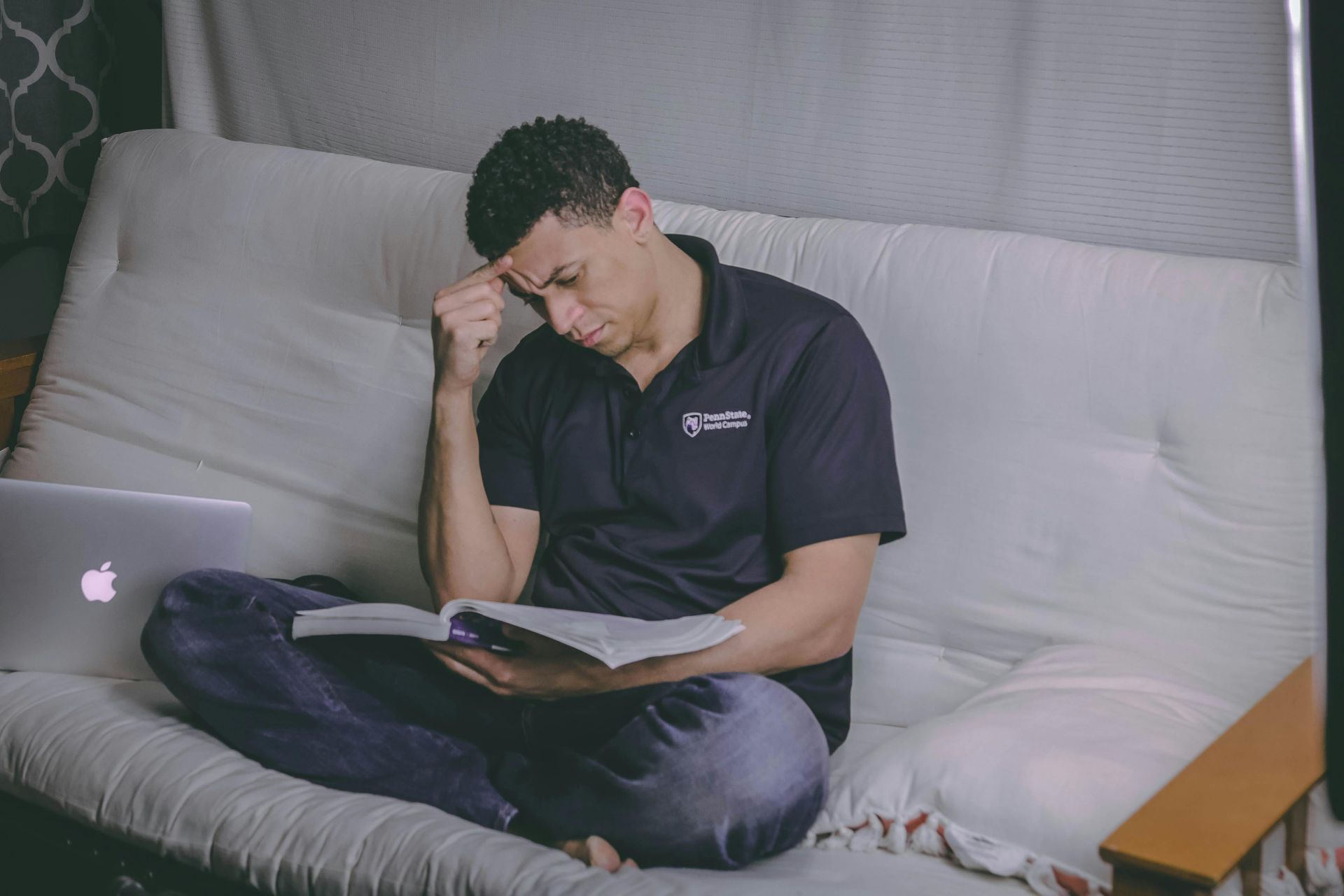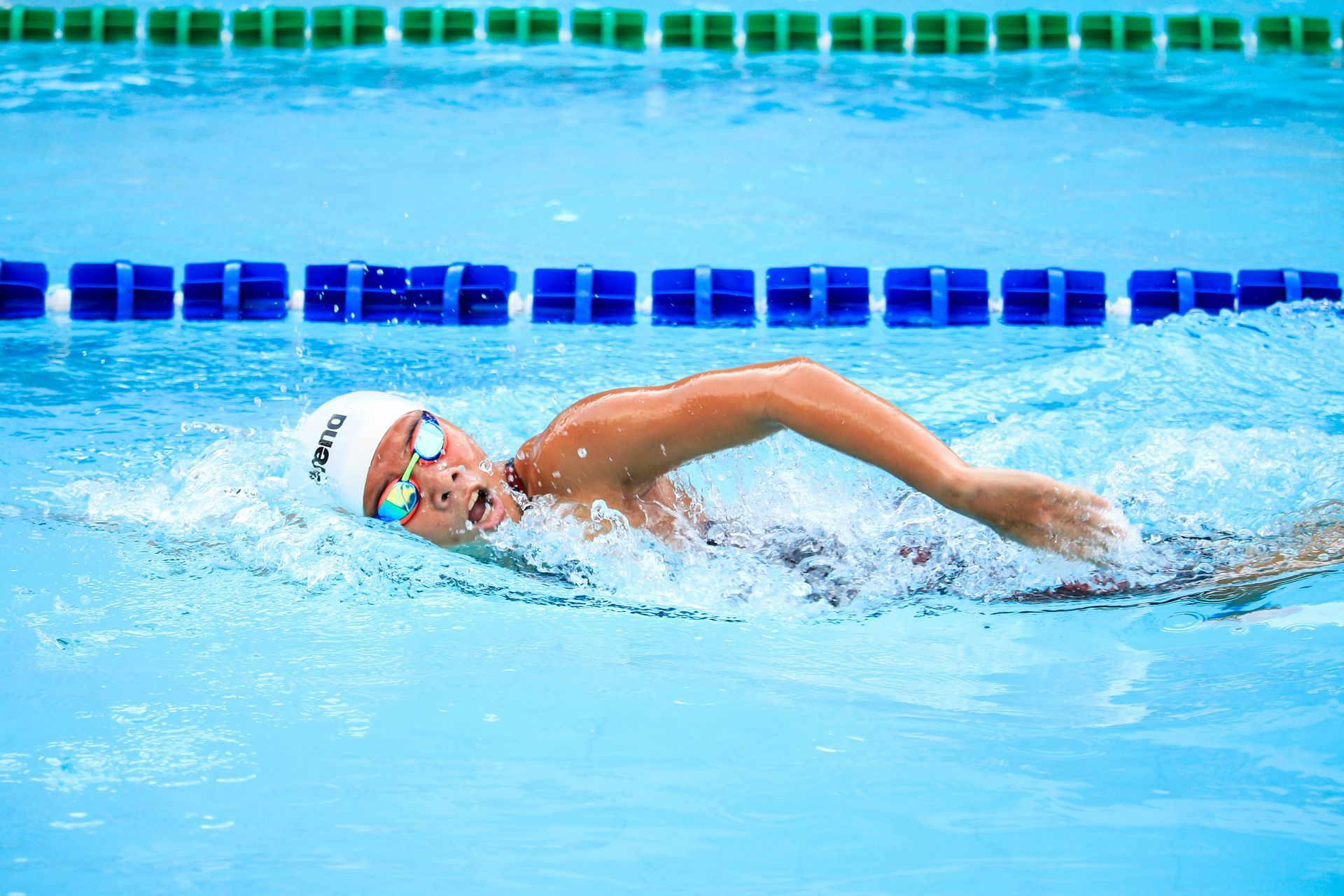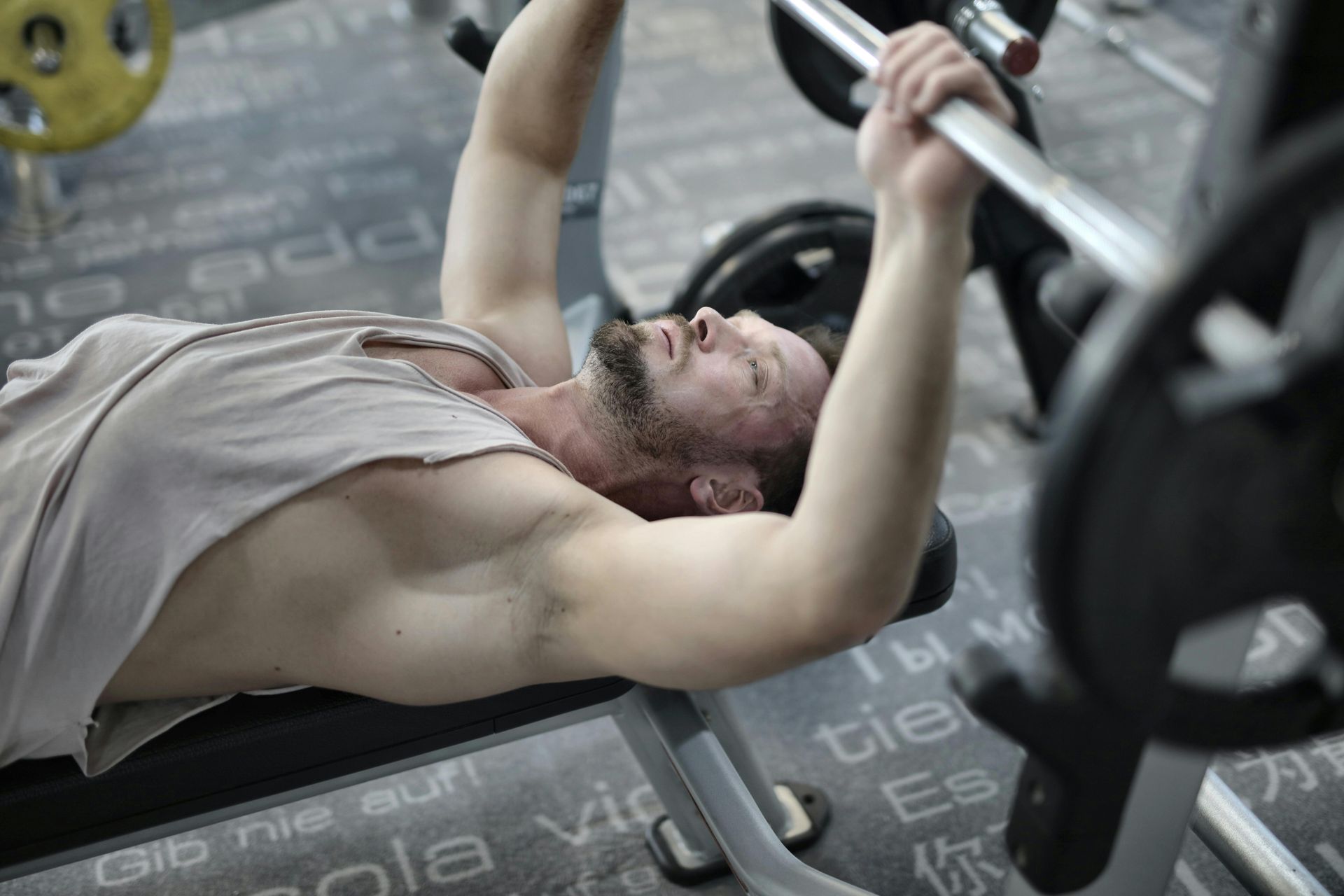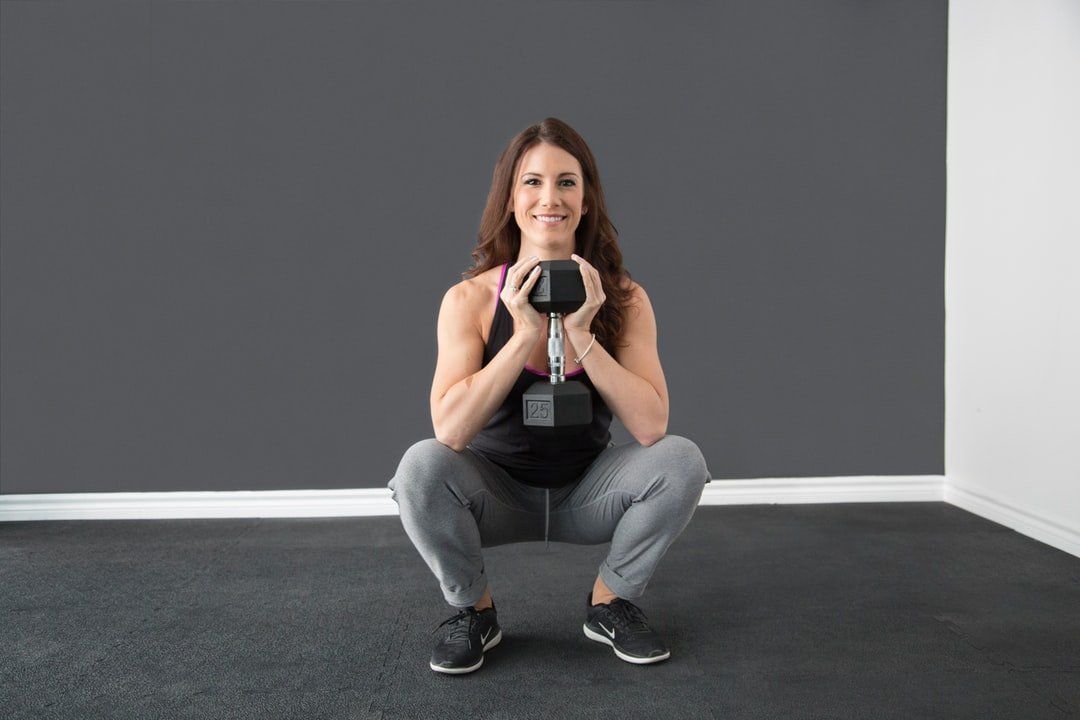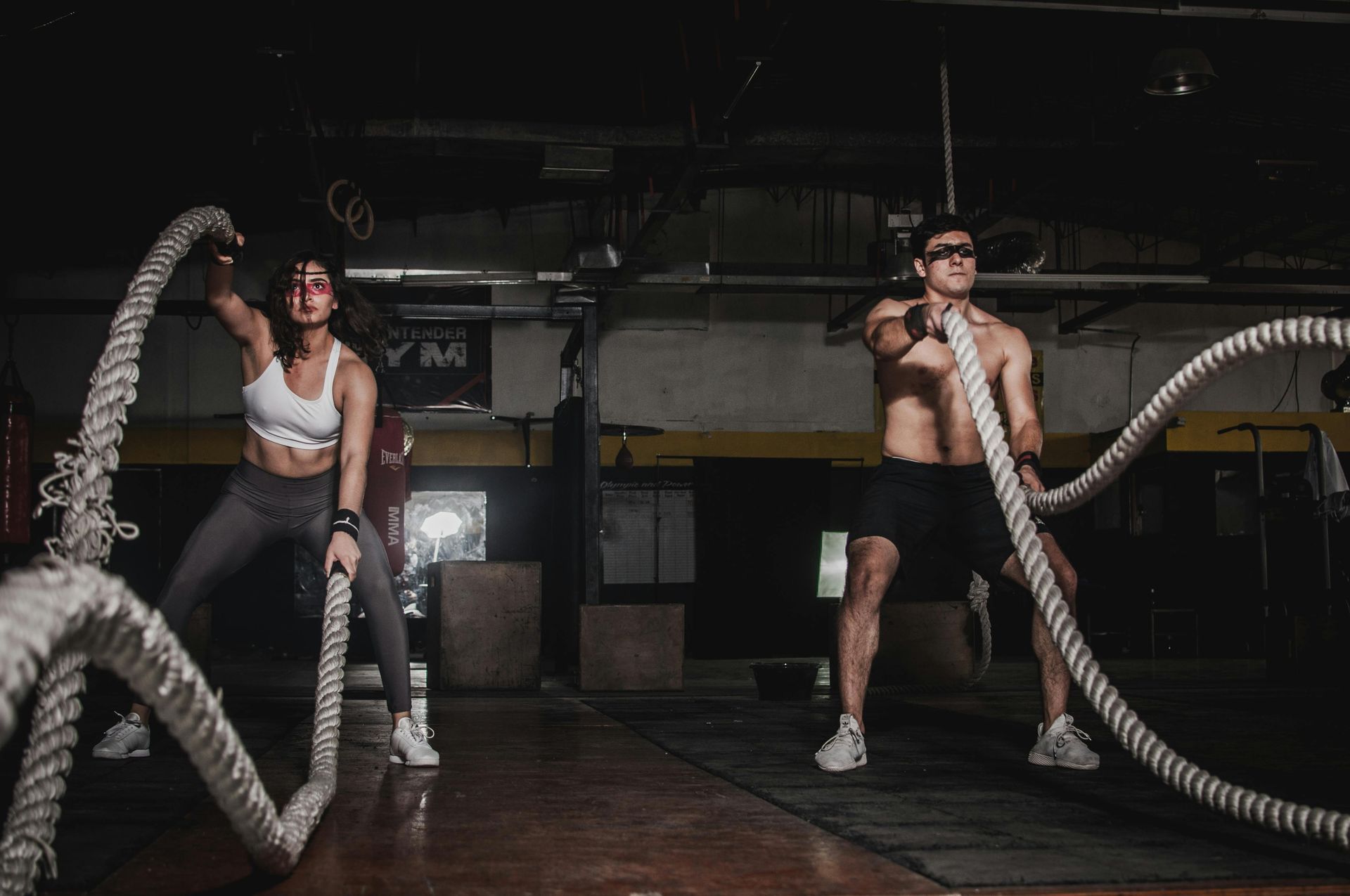Ethical Fitness Coaching
What Coaches Owe to Their Clients and the Fitness Community
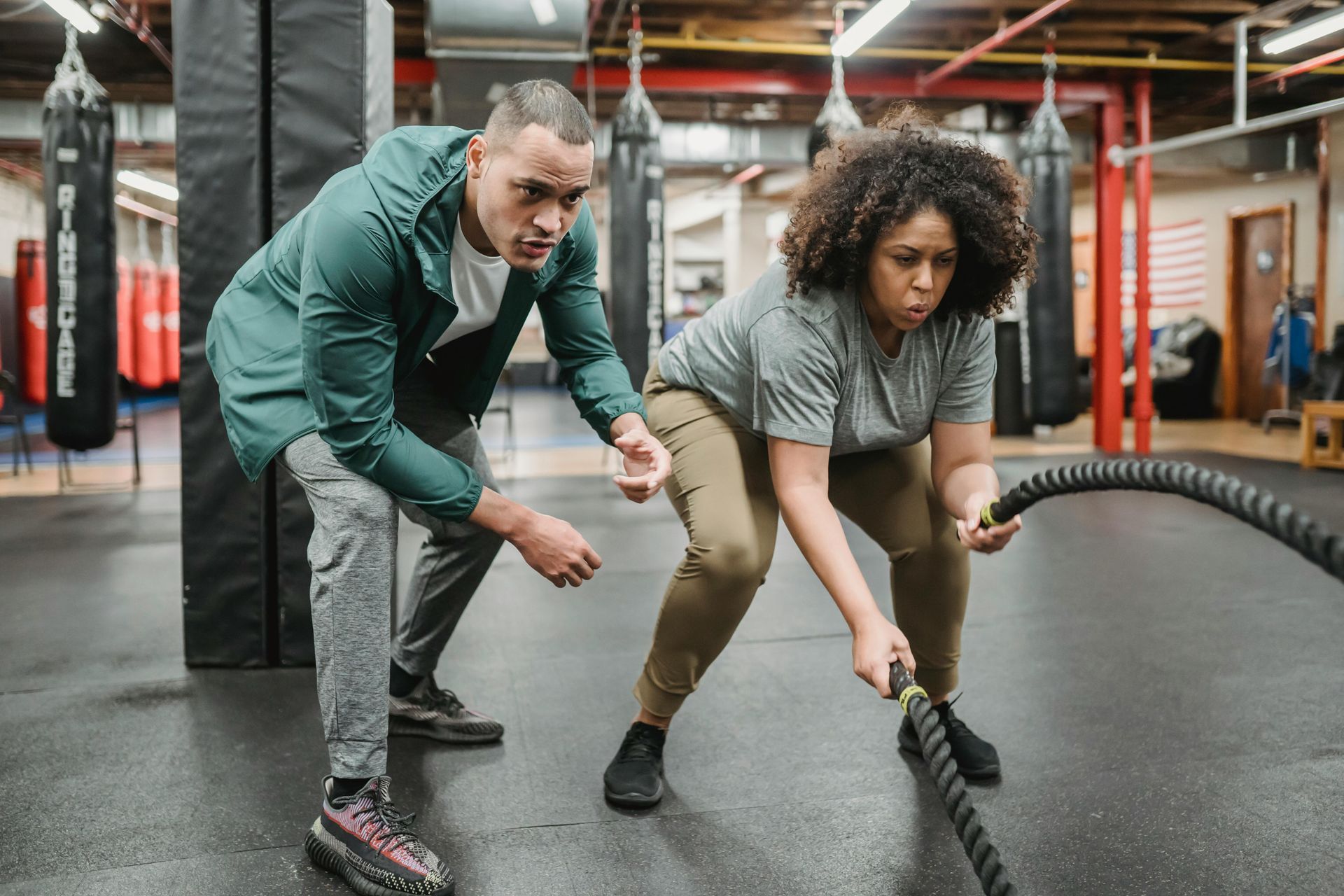
Author's note: this post contains discussion related to body image and unhealthy relationships with food and exercise.
I recently joined, then left, a women's lifting group on Facebook. I sometimes join different online groups to get a sense of what other coaches and fitness enthusiasts are talking about and, hopefully, have a positive impact on that discourse.
However, I realized after a week that there was a pattern of participants making posts and comments that suggested body dysmorphia and unhealthy relationships with food and exercise. While some participants would sometimes do their best to address these posts and comments, they were in the minority and it appeared there was nothing by way of moderation related to stuff like this, so I decided to review the group rules and policies.
I read that this was a relatively open group for women to post about fitness content within certain parameters: general norms of civil conduct, no political posting or commenting, and no soliciting fitness and nutrition services. For context, this group appeared to be started and run by a male fitness coach and the rules suggested to me that the group was moderated.
I decided to pose a question to the group moderator(s)/administrator(s) regarding what their approach might be to some of the posts I was seeing since there was nothing in the group description or rules/policies about it. I noted in my post that I understood the value of promoting open dialogue and letting participants feel free to discuss a variety of topics, so I suggested that if moderation was not an option for them, then perhaps they should consider adding a disclaimer to the group description alerting participants to the fact that there are discussions that could be harmful to people with a history of distorted body image and/or unhealthy relationships with food and exercise since those are often associated with the
most dangerous mental health conditions that especially affect women.
I was disappointed to find that so many women in that group would not just resist the idea, but did so in an incredibly reactive and defensive way, and some of my harshest critics were other coaches. How dare I suggest moderation or disclaimers? What counts as triggering to folks with histories isn't black and white, so why have standards about this at all? Why care how this discourse could impact others? Why are we responsible for anyone but ourselves?
Ethical Fitness Coaching
The fitness industry is full of noise, quick fixes, and conflicting advice. A lot of it is, at best, counterproductive, or, at worst, harmful. It's easy to feel lost and not know who to trust. One way to cut through the noise is to find an ethical fitness coach. An ethical fitness coach is more than just a person who counts reps and helps you develop good technique. They have a profound responsibility to their clients and the wider fitness community. This post outlines my professional philosophy that defines what it means to be an ethical coach so that you can determine which ones are most likely to be helpful.
While this isn't meant to be an exhaustive checklist, I will discuss some key characteristics of ethical coaching in addition to the more straightforward ones like professionalism, integrity, client confidentiality, creating a supportive environment, and accountability. I will also argue for why coaches should uphold these values grounded in our interconnectedness, tenderness, and vulnerability.
Centering Clients
One key thing to look for in a coach is whether or not they acknowledge that there is no single "best" program. An ethical coach tailors everything to their client's unique needs, goals, and limitations. They also acknowledge their client's health history, lifestyle, and preferences and adapt the programs based on client progress and how they feel.
Another responsibility is to teach clients how to be their own best coach in the long run. For instance, a good coach explains the "why" behind the exercises and helps their clients understand their body's signals.
Client safety and well-being is non-negotiable. Good coaches stress proper warm-ups and cool-downs, recognize when an exercise isn't right for someone, and know when to refer a client to a physical therapist or other healthcare professional.
A coaching relationship should be a collaborative journey where both parties have a voice and a role to play. It's a two-way street. The coach's job is to provide the expertise, structure, and guidance, but the client's job is to provide honest feedback, effort, and communication. The best results happen when both are fully engaged.
A coach needs to know how the client's body feels, what their energy levels are like, and if they're enjoying the process. This isn't just about following a plan; it's about making sure the plan is working for them. Thus, feedback is fundamental. The coach-client relationship thrives on open and honest communication. Coaches should encourage clients to share if a particular exercise doesn't feel right, if they're struggling with a nutritional recommendation, or if their sleep has been poor. They should make sure clients understand that this is a positive, not a complaint because feedback is essential for coaches to make sensible adjustments to their program and ensure it remains effective and safe.
While the coach is the fitness expert, clients are the experts on their own bodies and lives, so coaches should put them in the driver's seat while working with them to find solutions. For example, if a client struggles to do a certain exercise, an ethical coach won't just force them to do it. They'll discuss why it's challenging and find an alternative that works better for their client's body and goals. This approach respects client autonomy and empowers them to take ownership of their fitness journey.
A collaborative partnership also means celebrating progress together. Success isn't just measured in weight lost or load lifted. It's also in the little things—like finally hitting a new personal record, feeling less pain in a daily activity, or simply showing up consistently. A great coach celebrates these small victories with their clients, reinforcing the idea that they are a team working toward a common goal.
Using a Science-based Approach
Ethical coaches have a responsibility to stay current with scientific research. Their methods are built on principles of exercise physiology, biomechanics, motor behavior theory, and more. A science-based approach helps coaches be honest with clients about what's realistic.
“Magic bullet” solutions and quick fixes are rarely what they are purported to be and are sometimes dangerous. Sustainable health and fitness is a long-term journey that requires prioritizing consistency and patience.
Science tells us that fitness is more than just exercise. Sleep, nutrition, stress management, and mental health are all important. A good coach addresses all of these factors.
Educating the Fitness Community
A coach's role isn't limited to the time they spend with a client. A good coach should aim to equip clients with the knowledge to make informed decisions outside of the gym. This could include how to read a nutrition label, understanding the importance of recovery, or even how to spot misinformation online.
The fitness community can be a noisy place with a lot of bad advice. Our platforms (social media, blogs, etc.) should be used to share accurate, helpful information and debunk common myths.
Coaches can play a role in creating a more inclusive and body-positive/body-neutral fitness community. It is important to focus on performance, health, and how the body feels, rather than just aesthetics.
The Source of these Obligations
A coach's obligation doesn't come from a simple contract or a professional certification. It arises from the recognition of the client's fundamental vulnerability. The client is entrusting the coach with their physical well-being, their body's precarity. This trust, and the recognition of the client's potential for harm (both physical and psychological), is the source of the coach’s ethical duty.
Unfortunately, there are coaches out there who do not see things this way. As my anecdote shows, many of them believe their only obligations are to themselves and what Judith Butler would call their regime of self, i.e., their self, family, friends, and sometimes groups with whom they identify. Clients don’t always get counted as part of said regime, never mind the wider fitness community.
Some of the coaches I interacted with seem to think they exist independently of others, as if they birthed and raised themselves, educated themselves, somehow took care of themselves without any one providing them with job opportunities, healthcare, food, or other goods and services. They also apparently don’t rely on institutions or infrastructure and have acquired language without anyone teaching them. Never mind other identity markers like group affiliations (religious, occupational, etc.), preferences, or values. They somehow provided all of those things to themselves relying on no one but themselves to do so.
This attitude may seem silly because it is silly and is often adopted and maintained unreflectively and uncritically. Those who hold such an attitude are also fiercely defensive of it as a means to protect their egos. What should we understand about our obligations as coaches if we put our egos aside?
Butler's work, The Force of Nonviolence, critiques how certain lives are valued over others. In the fitness industry, this can manifest as a one-size-fits-all approach that ignores individual needs and vulnerabilities. "Centering Clients" becomes an act of nonviolence because it actively refuses to impose a pre-packaged, potentially harmful program on a unique individual. It acknowledges their singular body, their distinct history, and their specific limits. This is a nonviolent stance that honors their individual claim to a safe and effective path to health. By tailoring a program, the coach is not just being good at their job; they are refusing to cause harm by ignoring the client's distinct identity and needs.
Butler’s concept of the "I" as a "we" is perfectly illustrated in the collaborative model. This isn't just a good business practice; it's a profound ethical stance. The coach recognizes that they are not an all-knowing authority imposing their will. They are a partner whose expertise is only made useful through the client's feedback and engagement. This mutual respect and reliance on honest communication is an acknowledgment of their shared fate and responsibility within the relationship. The coach's obligation is to listen and adapt, and the client's obligation is to communicate and participate.
Zenju Earthlyn Manuel's work,
The Way of Tenderness, offers a complementary perspective, grounding the discussion in the embodied experience of vulnerability and the healing power of tenderness. Tenderness is not a passive or weak emotion. It is a powerful, active practice rooted in compassion and the willingness to be present with vulnerability, both one's own and others'. It requires us to listen deeply and respond with care.
Tenderness, in her view, is an embodied practice that brings us into a compassionate relationship with ourselves and with others. This perspective highlights the body as the primary site of ethical concern. Thus the fitness client is not an abstract concept; they are a person in a body that may have a history of pain, injury, or neglect (from themselves or others).
The coach's obligation is to meet the client's body with tenderness. This means listening to the body's signals, not just the mind's goals. The coach's duty is to be present with the client's embodied experience and to guide them toward well-being, not just toward performance metrics.
The assertion that while the coach is the fitness expert, clients are the experts on their own bodies and lives, so coaches should put them in the driver's seat while working with them to find solutions reflects an attitude that refuses to invalidate the client's lived experience of their own body. Instead of imposing a "cure" from the outside, the coach gently works with the client's own wisdom and intuition about their body. This respect for their inner knowledge is a form of tenderness that fosters autonomy and self-trust, which are crucial for long-term health and a healthy relationship with one's own body.
Celebrating "little things" is another manifestation of tenderness. A coach who focuses only on big, long-term goals can make the client feel like their progress is never enough. A coach who celebrates "showing up consistently" or "feeling less pain" is demonstrating compassionate presence. They are acknowledging the client's effort and their embodied experience, validating their journey rather than just the destination. This tenderness builds resilience and a positive relationship with the fitness process itself.
Considering the two frameworks together, Butler provides the structural, philosophical grounding: our obligation stems from the universal fact of our interconnectedness and shared vulnerability. Manuel provides the practical, embodied application: our ethical response to that vulnerability is through the practice of tenderness, which is rooted in compassionate listening and a deep respect for the client's embodied experience.
Together, they can be used to argue that the ethical fitness coach is not just a technician of the body but a compassionate partner who recognizes the profound interdependence and vulnerability that form the basis of the coaching relationship. The duties outlined in this post are thus not merely professional guidelines, but moral imperatives arising from a foundational commitment to nonviolence and tenderness.
Applying These Frameworks
Using Butler’s and Manuel’s views of ethics, we can take another look at the original problem I was confronting: disordered body image, eating, and exercise. How might nonviolence and tenderness help us understand this specific issue? Let’s focus on “I” as “we”.
Body dysmorphia and negative body image, which are arguably the main drivers of these issues, are interconnected with social discourse with the latter often contributing to the development and severity of the former. Body dysmorphia “is a condition that consists of a distressing or impairing preoccupation with imagined or slight defects in appearance, associated repetitive behaviors and where insight regarding appearance beliefs is often poor” (Singh and Veale, 2019). Body dysmorphia is a specific and severe mental health condition that falls under the broader umbrella of negative body image. While body image refers to an individual’s perception, feelings and thoughts about their physical appearance, body dysmorphic disorder (BDD) is characterized by an obsessive preoccupation with one or more perceived flaws that are often unnoticeable or appear minor to others (see
Quittkat et al., 2019; and
Varma and Rastogi, 2015 for more information).
Body dysmorphia and negative body image are strongly linked to disordered eating and exercise behaviors, often acting as a catalyst or maintaining factor for these harmful behaviors. The core issue is a dissatisfaction with one’s physical appearance, which drives the individual experiencing it to engage in behaviors aimed at “fixing” their perceived flaws. The question I raise is this, how is the development of a negative body image related to social discourse?
Social discourse, particularly online discourse, plays a powerful role in shaping how individuals perceive their bodies and can fuel the development and worsening of
body image issues. Certain social and cultural norms determine and promote body ideals. For instance, a systematic review by
Abdoli and colleagues (2024) shows that different cultures have different body ideals with Western cultures showing a preference for thinness which differs from non-Western cultures. It also suggests that “the young demographic, especially females, is the most vulnerable to body image issues; however, emerging research within our review also indicates a growing concern among males.”
Thus from the research we can conclude that negative body images are indeed shaped by social discourses and are illustrative of our interdependence and mutual vulnerability. Whether we acknowledge it or not, we have deep influences on each other that go all the way down to our core. Our fates are inevitably bound up with each other. As such, we are all obligated to each other to promote our mutual flourishing. By extension, coaches are obligated not just to themselves, not just to their clients, but also to their communities and the nature of this obligation is defined by nonviolence and tenderness and applied in the ways mentioned above.
Final Thoughts
In summary, this post argues for a professional philosophy of ethical fitness coaching grounded in the principles of nonviolence and tenderness. I began with a personal anecdote about a women's lifting group, highlighting a lack of moderation and a dismissive attitude toward posts suggesting body dysmorphia and unhealthy relationships with food and exercise. This experience serves as a springboard for the central argument: an ethical coach's responsibilities extend beyond the client to the broader fitness community.
The post outlines key characteristics of ethical coaching, including centering clients, using a science-based approach, and educating the fitness community. I ground these obligations in the philosophical frameworks of Judith Butler and Zenju Earthlyn Manuel. Butler's concept of interconnectedness and the "I" as a "we" is used to argue that a coach's ethical duty stems from a recognition of shared vulnerability and the need for a nonviolent approach that refuses to impose a one-size-fits-all program. Manuel's concept of tenderness is applied to the coach-client relationship, emphasizing the importance of compassion, listening to the client's embodied experience, and celebrating small victories. I conclude by linking these frameworks to the original issue, stating that negative body image is shaped by social discourse, illustrating our interdependence and obligating us all—especially fitness coaches—to promote mutual flourishing.
In conclusion, an ethical fitness coach's duties are not just professional guidelines but moral imperatives stemming from a foundational commitment to nonviolence and tenderness. I posit that social discourses, especially those online, play a significant role in creating and reinforcing negative body images. This demonstrates our deep influence on one another, highlighting that our fates are inevitably bound up with each other. Therefore, the ethical obligation of coaches is to promote the mutual flourishing of not only their clients but also the wider community by applying the principles of nonviolence and tenderness to their coaching practice and public discourse. This involves rejecting a purely ego-driven approach and instead embracing a collaborative, compassionate model that respects individual autonomy and combats harmful messaging.


